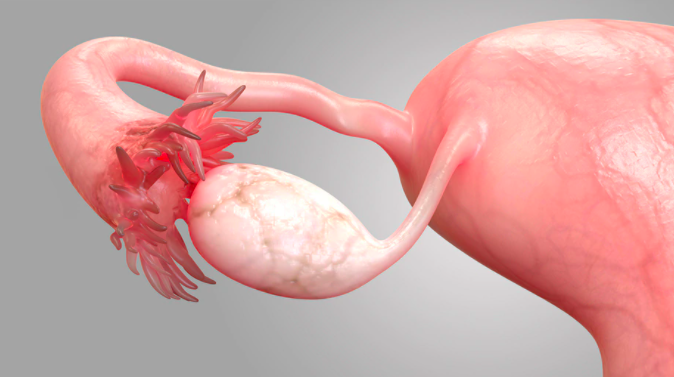By Ian Ingram
Adding the Wee1 inhibitor adavosertib to gemcitabine reduced the risk of disease progression and death in women with recurrent, platinum-resistant or -refractory ovarian cancer, a randomized phase II trial showed.
For the primary endpoint of progression-free survival (PFS) in 99 patients with high-grade serous tumors, those assigned to gemcitabine plus adavosertib had a median PFS of 4.6 months, as compared with 3.0 months with gemcitabine plus placebo (HR 0.55, 95% CI 0.35-0.90, P=0.015), reported Amit Oza, MD, of Princess Margaret Cancer Centre in Toronto, and colleagues.
Median overall survival was 11.4 months versus 7.2 months, respectively (HR 0.56, 95% CI 0.35-0.91, P=0.017).
“In advanced-stage or heavily pretreated high-grade serous ovarian cancer, few options remain after conventional therapy,” the authors wrote in The Lancet. “This is the first trial to show a significant benefit (progression-free survival, overall survival, and response rate according to RECIST) from the addition of adavosertib to gemcitabine in heavily pretreated platinum-resistant or platinum-refractory high-grade serous ovarian cancer, a setting of clinical need that has yet to be met with standard-of-care therapies.”
No patients in either arm achieved a complete response, but 23% in the adavosertib arm had a partial response, as compared with 6% in the placebo arm. In an exploratory cohort of women with non-high-grade serous tumors, four patients (16%) achieved a partial response.
“Adavosertib plus gemcitabine also showed signs of activity in rare histological subtypes of ovarian cancer (serous and endometrioid, low-grade endometrioid, carcinosarcoma, and clear cell),” noted Oza and co-authors. “Interestingly, both of the two patients in the non-high-grade serous ovarian cancer cohort with available genomic profiling were KRAS mutation positive, suggesting involvement of replication stress in directing treatment response.”
In an accompanying editorial, Sarah Blagden, MD, of the University of Oxford, and Shibani Nicum, MD, of Oxford University NHS Foundation Trust in England, called the correlation of treatment response and tumor histology and molecular features “a key strength” of the study.
While sample sizes were small, adding adavosertib appeared to benefit patients with homologous recombination deficiency, BRCA mutations, and those with CCNE1-amplified tumors.
“This study realizes the potential of targeting the cell cycle derangement present in a substantial subpopulation of patients with resistant ovarian cancer,” the editorialists wrote. “The development of rapid immunohistochemical or circulating biomarkers to identify this subpopulation could herald the more widespread use of cell cycle targeting therapies like adavosertib earlier in the disease course.”
From 2014 to 2018, the double-blind phase II study randomized 99 women with high-grade serous ovarian cancer 2:1 to intravenous gemcitabine (1,000 mg/m2 on days 1, 8, and 15 of 28-day cycles) plus either oral adavosertib (175 mg on days 1, 2, 8, 9, 15, and 16) or placebo at 11 centers across the U.S. and Canada. The exploratory cohort included an additional 25 patients with non-high-grade serous disease, who all received the combination treatment.
Patients had a median age of 62 years, and a median of three prior lines of treatment. Most in the study had platinum-resistant disease, while 10% in the study arm and 15% in the control arm had primary platinum-refractory disease. To enroll, women had to have an Eastern Cooperative Oncology Group (ECOG) performance status ≤2, normal organ function, normal marrow function, and a life expectancy of 3 months or longer.
Toxicity was “generally manageable with intermittent dose modification and did not lead to severe complications,” according to the study authors.
Common grade ≥3 adverse events in the adavosertib and placebo arms, respectively, included neutropenia (62% vs 30%), leukopenia (54% vs 18%), lymphopenia (34% vs 18%), anemia (31% vs 21%), and thrombocytopenia (31% vs 6%).
Blagden and Nicum said the adavosertib dose of 175 mg “might be unnecessarily high for the heavily treated patients with high-grade serous ovarian cancer; an absence of pharmacodynamic evidence of target engagement leaves this question unanswered.”
There were no deaths related to treatment. One patient in the study arm died from sepsis, and one patient in the control arm died from disease progression.
This article was published by MedPage Today.


